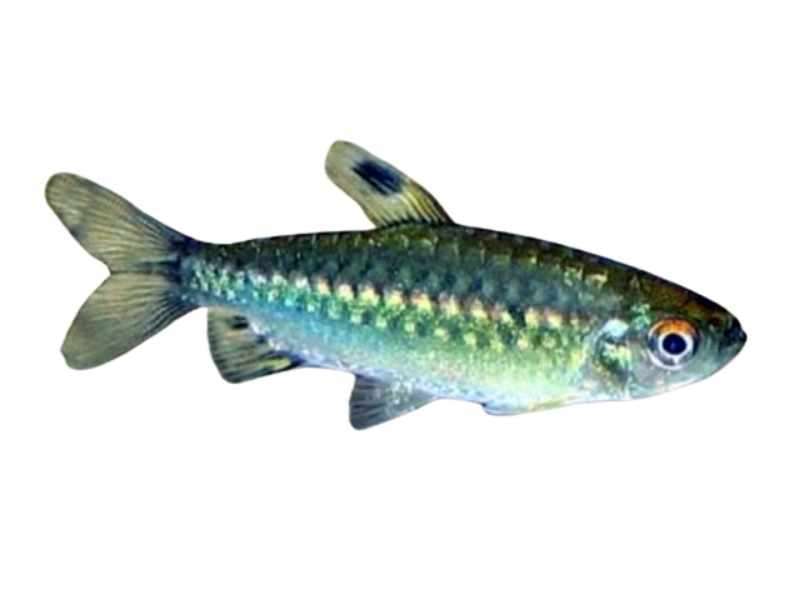The Niger tetra-Arnoldichthys spilopterus is a small freshwater fish that is found in in the rivers of Africa. These fish are popular in the aquarium hobby because they are hardy and easy to care for, but they can also be aggressive towards other fish. It is found in pet stores all over the world.
Systematic Position
Phylum: Chordata
Subphylum: Vertebrata
Class: Actinopterigii
Order: Characiformes
Family: Alestidae
Genus: Arnoldichthys
Species: Arnoldichthys spilopterus
The physical description of the Niger tetra can vary greatly depending on its environment, but they usually have an elongated body with a deep, compressed caudal peduncle. They are typically about 3.75 inches (9.5 cm) long and can live for up to 10 years in captivity. The males are slightly larger than females. It has a dark brown to black body with a bright red stripe that runs the length of their body. Juvenile fish are generally silvery with black markings on their sides, but these disappear as they mature. It also has a long, pointed snout and thin and filamentous dorsal fin with blue markings while the anal fin is short and rounded.

Niger Tetra Quick Stats
Scientific Name: Arnoldichthys spilopterus
Common Name: Big-Scaled African Characin, Niger tetra, Red Eyed Characin, African Red Eye Tetra, Arnold’s Tetra Large Scaled African Characin, Niger Tetra, Arnold’s Red Eyed Characin, , etc
Adult Size: 3.75 inches (9.5 cm)
Minimum Tank size: 20 gallons
Diet; Omnivore
Breeding: Egg layer
Temperament: Peaceful
Temperature: 73 -82°F (23– 28°C)
pH: 6.0 – 8.0
Hardness: 5-19 dGH
Care level: Easy
Lifespan: up to 10 years
You may also read: Blue Tetra-Knodus borki
In the wild, these fish feed on insects, crustaceans, and other small aquatic organisms; however, they will accept most types of food offered in the aquarium including flake food, freeze-dried foods, live brine shrimp, and bloodworms.
Niger tetra is a schooling species that prefers to live in fast-flowing water with plenty of rocks and plants for cover. They also prefer cool, clean water and do well in tanks with moderate to high levels of dissolved oxygen. It does well when kept in groups of six or more specimens as they are social animals who like to swim together. This species does well when kept in an aquarium with other small, peaceful fishes and requires a tank size of at least 20 gallons. In this case, it can be kept with other peaceful fish species such as guppies, platies, swordtails, mollies, and barbs.
Niger tetras make excellent additions to both community tanks and planted tanks. In community tanks, they help keep populations of smaller more delicate fishes under control by being aggressive predators. In planted tanks, they help scavenge any excess food or plant material that might decay and cause an algae bloom.
Tankmates should be chosen carefully though, as this species can be aggressive towards other fishes that share its tank space. The water temperature should range from 73 to 82 degrees Fahrenheit (23 to 28 degrees Celsius) and the pH should be between 6 and 8.0.
Niger tetra (Arnoldichthys spilopterus) breeding is a fun and exciting process that can be enjoyed by everyone. This type of breeding typically occurs in a community tank, so it’s important to have plenty of plants and hiding spots for the fish. When you are ready to start breeding, you will need to provide some basic items like an air pump and heater.
This species spawns during rainy season floods when males build nests by attaching clumps of vegetation to branches or other structures near shorelines; females then deposit their eggs in these nests where they are guarded by males until they hatch. Once hatched, fry remain close to their fathers until they can fend for themselves.
The male niger tetra will build a bubble nest at the surface of the water while the female lays her eggs. The eggs will then be fertilized and incubated in the nest until they hatch. Once they have hatched, both parents will care for them until they are able to fend for themselves. In most cases, niger tetras will breed readily without any assistance from you. However, if you want to increase your chances of success, make sure that your tank is healthy and well-maintained.
Breeding these fish can be a bit tricky, but it’s definitely worth it once you see your tank filled with healthy and happy juveniles. Here are some tips to help get you started:
- Start by selecting a healthy pair of Niger tetras. Make sure both fish are active and eating well before attempting to breed them.
- Next, set up a breeding tank specifically for your tetras. The tank should be at least 10 gallons in size and include plenty of plants or other hiding places for the fry to hide in once they’re born.
- Provide plenty of food for the adults during breeding season; they will need lots of energy to produce eggs! A diet rich in live food or frozen brine shrimp is ideal.
- Once the female has begun laying eggs, remove her from the tank immediately so that she doesn’t eat them all. If possible, also remove the male from the tank at this time so he doesn’t fertilize all of the eggs prematurely – this will increase your chances off successful hatching rates later on.
- Gently transfer any newly-laid eggs into another container filled with fresh water. Be very careful not to damage or crush the delicate embryos inside.
- Keep an eye on the eggs over the next few days; if they start hatching, move them back into the egg incubation tank right away.
- Once hatched, provide small mouthfuls of tiny live foods (like baby brine shrimp or microworms) several times per day until they are large enough to really fend for themselves.
This makes it an ideal choice for those who want an interesting aquarium display. These lively fish are easy to care for and make a great addition to any home aquarium.

